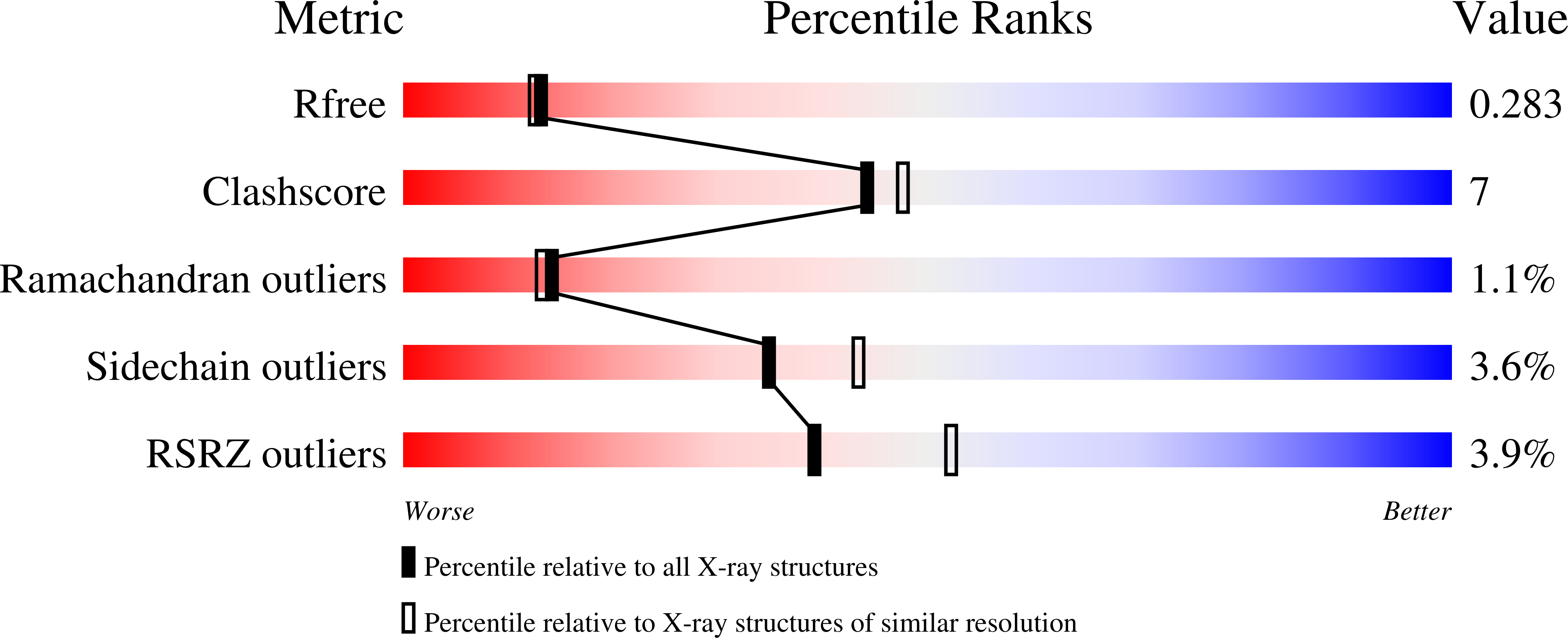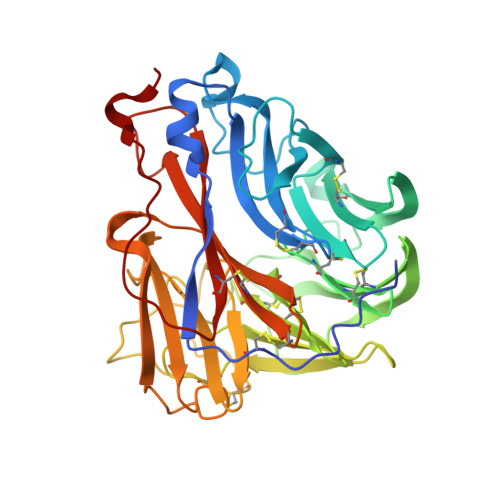Influenza virus neuraminidases with reduced enzymatic activity that avidly bind sialic Acid receptors.
Zhu, X., McBride, R., Nycholat, C.M., Yu, W., Paulson, J.C., Wilson, I.A.(2012) J Virol 86: 13371-13383
- PubMed: 23015718
- DOI: https://doi.org/10.1128/JVI.01426-12
- Primary Citation of Related Structures:
4GZO, 4GZP, 4GZQ, 4GZS, 4GZT, 4GZW, 4GZX - PubMed Abstract:
Influenza virus neuraminidase (NA) cleaves off sialic acid from cellular receptors of hemagglutinin (HA) to enable progeny escape from infected cells. However, NA variants (D151G) of recent human H3N2 viruses have also been reported to bind receptors on red blood cells, but the nature of these receptors and the effect of the mutation on NA activity were not established. Here, we compare the functional and structural properties of a human H3N2 NA from A/Tanzania/205/2010 and its D151G mutant, which supports HA-independent receptor binding. While the wild-type NA efficiently cleaves sialic acid from both α2-6- and α2-3-linked glycans, the mutant exhibits much reduced enzymatic activity toward both types of sialosides. Conversely, while wild-type NA shows no detectable binding to sialosides, the D151G NA exhibits avid binding with broad specificity toward α2-3 sialosides. D151G NA binds the 3' sialyllactosamine (3'-SLN) and 6'-SLN sialosides with equilibrium dissociation constant (K(D)) values of 30.0 μM and 645 μM, respectively, which correspond to much higher affinities than the corresponding affinities (low mM) of HA to these glycans. Crystal structures of wild-type and mutant NAs reveal the structural basis for glycan binding in the active site by exclusively impairing the glycosidic bond hydrolysis step. The general significance of D151 among influenza virus NAs was further explored by introducing the D151G mutation into three N1 NAs and one N2 NA, which all exhibited reduced enzymatic activity and preferential binding to α2-3 sialosides. Since the enzymatic and binding activities of NAs are not routinely assessed, the potential for NA receptor binding to contribute to influenza virus biology may be underappreciated.
Organizational Affiliation:
Department of Molecular Biology, The Scripps Research Institute, La Jolla, California, USA.




















